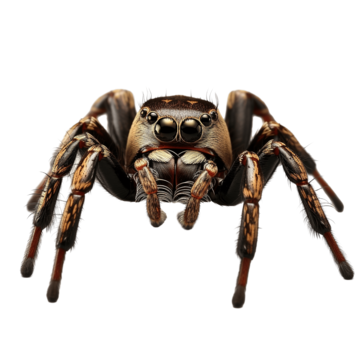Uncategorized
Why Jumping Spiders Make Great Pets: A Comprehensive Guide
Why Jumping Spiders Are Attractive and Suitable Pets
Jumping spiders are extraordinarily captivating creatures, admired for their vibrant colors and unique appearances. These arachnids come in an array of hues and patterns, ranging from iridescent blues and greens to striking blacks and whites. Their distinct aesthetic appeal is complemented by their large, forward-facing eyes, which give them an almost cartoonish and endearing visage. These physical characteristics make them irresistibly charming to pet owners who are drawn to their visual allure.
One of the primary reasons jumping spiders are suitable pets is their diminutive size. These arachnids are small, typically measuring only a few millimeters to a centimeter in length, making them easy to house and maintain. Their minimal spatial requirements make them perfect for individuals living in compact environments, such as apartments or dorm rooms. Additionally, their ease of handling further enhances their suitability as pets for both children and adults alike. Unlike larger spiders, jumping spiders are relatively gentle and less intimidating, making them accessible to novice arachnid enthusiasts.
Another fascinating aspect of jumping spiders is their interactive and engaging nature. These active hunters are known for their remarkable agility, often seen running up walls and ceilings with astonishing speed and precision. Their dynamic behavior provides endless entertainment and makes them a joy to observe and interact with. The curiosity and engaging antics of jumping spiders ensure they remain intriguing pets, fostering a unique bond between the spider and its owner.
Moreover, owning a jumping spider can be an enriching educational experience, especially for children. The responsibility of caring for an arachnid teaches essential lessons on animal care, nurturing an appreciation for wildlife and ecosystems. It gives children a hands-on opportunity to learn about the diverse world of arachnids, fostering a sense of empathy and understanding toward these often-misunderstood creatures. This educational aspect adds significant value, making jumping spiders not only fascinating pets but also beneficial companions for young learners.
Caring for Your Jumping Spider: Tips and Considerations
Jumping spiders, distinguished by their unique jumping abilities and fascinating behavior, require particular care to ensure they thrive in a domestic environment. Establishing the ideal living conditions is critical. A moderately-sized enclosure, typically a small terrarium or specialized container with adequate ventilation, suffices to provide a comfortable habitat. It’s essential to maintain an optimal temperature range of 70°F to 85°F (21°C to 30°C), as fluctuations can negatively impact their health. Using a thermometer or a thermostat can help monitor and stabilize these temperatures.
Humidity is another vital aspect. Jumping spiders typically thrive in environments with a relative humidity of around 50% to 60%. Employing a hygrometer to monitor humidity levels and occasionally misting the enclosure lightly can create the proper balance. Be cautious to avoid excess moisture, which can lead to mold growth and health issues.
Feeding jumping spiders is straightforward but requires attention to detail. These predators primarily consume small insects such as flies, fruit flies, and small crickets. It’s advisable to provide prey that is no larger than the spider itself to prevent injury. Feeding should be done every two to three days, ensuring the food source is alive to stimulate the spider’s hunting instinct. Additionally, removing any uneaten insects from the enclosure prevents rotting and potential contamination.
Regular maintenance of the habitat is essential for your jumping spider’s wellbeing. This includes cleaning the enclosure periodically and checking for mold or any pests. Maintaining a clean environment reduces the risk of illnesses and supports overall health. Occasionally, jumping spiders might encounter health issues such as molting problems, which require careful observation and, if necessary, the intervention of an exotic pet veterinarian.
Considering the agility and speed of jumping spiders, cautious handling is necessary. Their rapid movements can complicate recapturing if they escape, and mishandling could cause injury. Using a delicate approach, possibly with a soft brush or by gently coaxing them, can facilitate safe handling.
Adhering to these care tips ensures that jumping spiders can live healthily and happily in a captive environment, allowing their captivating traits to shine while minimizing risks and promoting their wellbeing.
